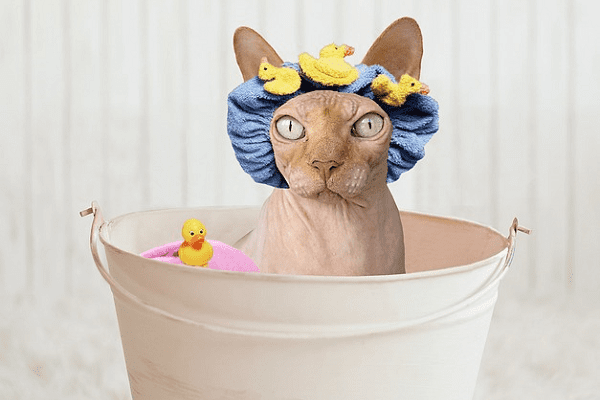Pet care >>>> How to bathe a cat or dog?
How to bathe a cat or dog?

A bath day for a pet is an event, both for the animal itself and for its owner. Problems begin at the moment when the owner of the animal realizes that his pet loves getting dirty and hates bathing.
You can not wash the animal only in a few cases:
- the animal categorically refuses water procedures - it is afraid of water;
- after medical vaccinations or vaccinations (bathing can be resumed only after three weeks);
- during the period of the pet's illness or immediately after recovery;
- in cases of pet hair treatment with antiparasitic and anti-flea agents (withstand the duration of the agent with a temporary reserve).
How to bathe a cat or dog if they don't want to, but bathing is required to clean the coat? The greatest difficulty in washing a pet is usually dogs, since cats are cleaner creatures and are quite capable of licking their own hair to a shine, that is, they do without outside hygienic support. But cats do not like to bathe, and those representatives of the feline world who are not afraid of water procedures, tolerate them without enthusiasm - they endure bathing.
But dogs require a walk, and a street walk, as a rule, is accompanied by dusting of the fur, paws, abdomen, and in rainy weather the animal gets dirty in full. The best way out for a pet that resists water procedures is to partially wash the paws and hair in the abdominal area. To improve the condition of the coat, dry shampoos are used, which are applied by dusting and then combing. Shampoos of this kind are composed of absorbents that absorb contaminants.

If the animals agree to be washed in the shower, then in this case they are not washed often: a maximum of once every two or more months, but at least twice a year.
Shampoos for washing animals are selected with a neutral content with a minimum alkaline component. Means for the care of the human body are not suitable for the animal, since the surface of the skin of woolen pets has a kind of natural lubricant, which performs protective functions and is capable of being destroyed when it is treated with shampoos with high alkaline levels. It is worth knowing that both laundry soap and baby shampoo are designed for the peculiarities of human skin, but not the skin of an animal, which is much thinner and more sensitive.
Considering that a global bath day is rarely arranged for an animal, it is possible to buy a high-quality specialized shampoo to wash the animal in order to preserve the animal's health.
Often only those animals that love water, swim, splash are bathed, but such frequent water procedures are carried out without the participation of detergents, only with the help of water of average temperature (40-45 degrees). After washing, the animal is soaked with a towel, given the opportunity to shake off the coat itself and wait for it to dry completely before combing. Some cat and dog owners use a hair dryer to speed up the drying process after bathing. It is possible to use a hairdryer once in an emergency, but drying an animal regularly with a hairdryer means drying out its coat and skin, which also love moisture (like people) and deteriorate from excessive dryness.
Long-haired cats and dogs require daily brushing, but washing such a long coat is often not worth it, it can change its natural qualities.
Bathing different furry pets.
Bathing procedures can be carried out for such woolen pets as hamsters, guinea pigs, rabbits, but not for chinchillas, who are accustomed to brushing their wool in a different way - wallowing in volcanic dust. For this reason, they buy a special filler for chinchillas - sand, giving them the opportunity to lie in it to their fullest.
Hamsters, guinea pigs and rabbits are offered bathing, not forced. In order to interest the animal in the water procedure, a bath of water is placed in front of it and the paws are “blotted”, if the animal does not like the “wet effect”, bathing is canceled.

Read

Read



























